Whether you’re looking for general information on TV Advertising, or have specific questions, we’ll help you with your TV advertisement.
What are the top reasons for Advertising on TV?
- TV Advertising sells your products
- Companies that advertise on TV are more trusted
- TV adverts reach a huge audience
- Adverts show emotion and passion
- TV advertising boosts online traffic
For specific information, please see our other pages on Media Buying our detailed Advert Production page or TV Advertising costs.
Adverts on TV
We’re often asked – Why should I advertise on TV? The answer, companies like Facebook, Google and Amazon advertise on television because it is effective. The new digital channels have made it affordable for smaller companies to advertise on TV and build their businesses too.

“TV advertising works, it works better than anything else, and it works for all budgets. Nothing else has TV’s reach, scale and connection with audiences; no other form of advertising is as trusted.”
Lindsey Clay Chief Executive of Thinkbox.
Table of Contents
- Pre-Production
- The Production / Shoot
- Post Production
- Delivery – getting your Adverts on TV
- Amplification – Social Video Marketing
At Toast, we are here to guide you through the whole advertising on TV process, from the initial briefing through to the final clearances and playing out to TV channels. If you’ve whizzed down to the bottom of the page and back again you’re probably feeling a little tightening in your chest but don’t panic we’re professionals – give us a ring and we’d be happy to answer any questions you have.



How can we help?
CONTACT USStrategy
Promoting a new brand on TV
When thinking about how to advertise on TV, it’s worth working out what you want to achieve from your advert. We’re often asked – Is TV advertising effective? Yes, companies use TV advertising because it is effective.
Online brands like Facebook, Google and Amazon are some of the largest buyers of TV advertising. They advertise on TV because it builds their brands.
If you’re a new brand or perhaps a good cause you might want to raise awareness. You can also say what sets you apart. You may have a special offer you want to promote. Or you may want to attract new customers or get them to switch to your brand from a rival.
If you’ve done print or digital advertising before you’ll have a handle on the briefing process which helps immensely. Putting together a creative brief that encapsulates all your needs and some insight into your brand is half the battle.
Please take a look below; we set out some of the different types of advertising.
What are the different types of Broadcast TV Advertising
DRTV – Direct Response TV. A type of advert that gets a response from the viewer.
Brand Advertising – Reinforcing a brand message, not necessarily selling directly.
Product Advertising – Does what it says on the tin.
Charity Advertising – Is a compelling method of promoting your message.
Animated Adverts – A fun way to get your message across.
Celebrity Endorsement Adverts – Use the power of celebrity combined with TV’s massive reach to drive sales.
Episodic Adverts – It worked brilliantly for Gold Blend.
Christmas TV Advert – Some people anticipate the adverts as much as Santa.
Challenger brand – how to advertise on TV
Whether you’re fighting for position with an established name. Or you’ve invented an entirely new category being a challenger brand is an exciting ride. Building an advertising strategy for a challenger brand allows you more flexibility. You get the chance to be irreverent, funny or a little bit cheeky.
The chances are many of the viewers are seeing your brand for the first time so making an impact counts. Having a marketing message that differentiates you from the incumbent and paints your brand as the new refreshing alternative does wonders for your sales – ask Innocent Smoothies, Toast produced their first-ever TV advertising launching them to global stardom.
Changing perception
Using advertising on TV to steer the public’s perception of your brand is a powerful tool; for years. Bacardi hung their marketing hat on the image of island life and laid back reggae beats.
The influx of vodka decimated sales as other players entered in the mixed drinks world. Little Britain’s Daffyd having a penchant for Bacardi and Coke further tarnished the Bacardi brand.
Bacardi threw a vast marketing drive at the brand with TV ad’s rolled out, encouraging the viewers to remember Bacardi’s roots in Cuba. Advertising made Bacardi an authentic drink again.
Targeting a new demographic
You have a solid customer base who know your product or use your service but, how do you grow into new markets? By using the power of advertising on TV, you can target an entirely new demographic to expand your customer base. Using a bespoke media plan, you can focus on the kind of audience you’re looking for and run your TV advert between shows they watch.
Direct Response TV Advertising
The second screen phenomenon where TV viewers sit watching the main TV screen while also browsing social media or the broader internet on a phone or tablet has made direct response advertising incredibly powerful.
A DRTV advert with a strong creative backed by either a URL or phone number can generate sales within seconds of the advert running.
DRTV is great for sales, and because attribution software can correlate the sales spike with a specific TV advert, it means companies can gather valuable data on which TV channels, time-slots and regions are performing best.



“How to” adverts
Ancestry, the family tree website came to Toast with a problem, their new DNA kits were selling well, but they still felt there was a barrier to uptake. The public saw DNA testing as too much like the TV show CSI.
Toast put together a charming “how to” advert featuring a lovable animated character “Little Jack” to explain the entire process and make it friendly and approachable. Using TV advertising to present a product or service is a great way to go beyond just brand advertising.
Many of the new online services sound complicated when described but add some slick visuals and a jaunty music track and customers feel they know your app before venturing online.
Growing a user base
Many online services or websites have built-in ways of getting users to sign-up. Pinterest only shows limited data to casual browsers. Facebook convinced nearly the entire world to sign-up but even their sign up rate tailed off.
The need for ever more users is essential; a company’s share price often depends on it. Finding a new demographic is the reason many decide to advertise on television, to find markets they can’t reach online and introduce their service via the trusted medium of TV.
Advertising on TV builds trust. Put that trust to good use, websites that need to find new customers can rely on the “as seen on TV” factor. If you’re looking for people to trust you, TV is a great place to start. Some online services such as dating service some need something a little special to sign up new members.
Media Buying – Buying space to Advertise on TV
Targeting your audience
One of the earliest things to do when planning an advertising campaign is to work out who your target audience is. Who are you trying to reach with your TV advert? There are several research tools available to help build your audience. If you want women at a certain affluence level to view your commercial, then we would tailor your media plan to feature your advert against shows that would best fit this viewer type.

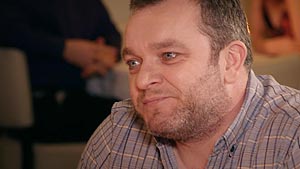
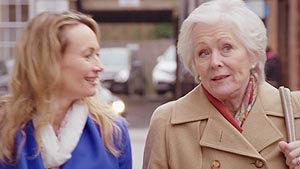
Regional Advertising
Using the ITV regions is a great way to target specific geographic locations. Regional testing of an advertising campaign can be a cost-effective way of trialling a new product or service to see how it performs.
Another way to use regional advertising is to generate adverts with differing calls to action. Each ITV region can run an advert with a unique phone number which allows tracking of sales data from specific areas.
Targeted advertising
Sky Adsmart is a platform used by Sky the satellite broadcaster. Sky have data on all their subscribers, this data is sourced from credit rating agencies and is quite granular, for example, Sky can target subscribers by household affluence level, car ownership and the type of house they own.
Adsmart can also target postcodes areas down to the first two letters of a postcode. Advertisers wanting to use the Adsmart platform choose from a range of targeting categories, these categories build a target audience. The Sky set-top box downloads adverts overnight which show to viewers the next day.
The adverts run in regular ad breaks with the viewer seeing some adverts specifically chosen to target them. Sky generate costs for running these adverts based on the criteria selected. It is usually an expensive way to get adverts on TV but has the benefit of being highly specific.
Advertising on TV with Broadcaster investment
Channel 4 has set up a commercial growth fund which it uses to invest in startup companies looking for fast growth. The broadcaster uses the reach of TV to expand the startup’s user or customer base in return for an equity stake in the company. Channel 4 has already inked deals with brands such as Eve mattress who have advertised on C4 and C4’s video-on-demand platform. ITV and STV run similar investment schemes.
Buying TV Ads
When you buy TV ads to advertise on television deals are done between advertisers and broadcasters. Media buying is the process of purchasing the correct slots for your advert to run in. Toast has expert media buyers who can help get the best price for media.
Media buying is generally organised well in advance with funds paid before the advert runs. Many options affect the price paid for each slot. These include the audience targeted, time of the slot, which region picked and the length of the TV ad. TV adverts are usually 30, 15 or 60 seconds in duration.
Last-minute media buying
Many TV Advertising deals are available at the last minute, these slots have either not been pre-sold or have been discarded by other advertisers with no time to organise replacement creative. Media buyers can sometimes negotiate discounts for these slots with so-called zero view advert slots available for free.
Checking Advert performance
Clients often want to know – How to track TV adverts? Tracking is done with attribution software, once a TV advert is running the software can track how well the campaign is working on selected channels, at individual time slots and with specific creative. Solutions like Adalyser track website visits and correlate them against the TV spots running.
Data gets sampled every second, so even if adverts are running on multiple broadcasters, it is still possible to attribute leads to media spend. All this data allows changes to be made to a media plan, targeting top-performing channels and time slots.
It’s possible to trial different creative or calls to action to get the best solution possible. John Wanamaker a successful United States merchant once said: “Half the money I spend on advertising is wasted; the trouble is I don’t know which half.” – those days are fortunately behind us.
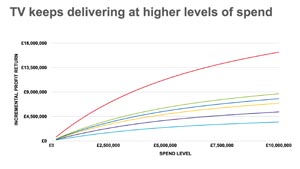
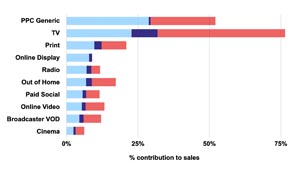
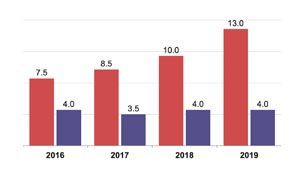
Creative Adverts – How to make a TV advert
Writing a brief
In this creative section, we’ll explain how to make a TV advert, the main thing to remember is: “it’s all about the idea.” Getting an excellent TV advert starts with a creative team who are inspired to take risks. A concise brief will set the parameters, and brilliant creatives will challenge those boundaries.
Hopefully, you’ve had an experience of brief writing. It can be a challenging undertaking as it forces any business to sit down and focus on themselves.
Distilling down years of marketing department pain into a few pages of A4 can be tricky but done correctly, and it will become the key to teasing out creative responses that excite, enchant and drive sales higher.
Getting over precisely what you need without stifling the creative chances is necessary, an excellent creative team will respond with multiple routes, so having an open brief to work with is a good start.
Finding Creatives
Once you’ve finished your creative brief, it’s time to get a team involved to help explain how to advertise on TV. The process of tracking down a broadcast TV advertising agency is relatively easy. You can either go by recommendations or find other campaigns you liked and work out who was responsible for the creative.
Getting TV ad agencies to pitch creative ideas is common but be careful how many agencies you invite to pitch, around 3 to 4 agencies is ideal, pitching involves a lot of time both in creative terms and in reviewing and arranging pitch meetings. If you find the right team and put your trust in them, the reward will be a creative advert that will make your brand shine.
The idea
Picking a winning idea can seem a bit like sticking a pin in a map. Hopefully, you’ll see enough creative ideas to find a route that resonates with your brand.
Some questions to ask when picking a winning idea are. Does it have legs? What might seem like a great idea at first viewing can quickly develop into the most annoying TV advert ever. Is the “idea” a campaign?
Can you see other TV adverts based on this idea or is it a one-hit-wonder? Is the idea original? Everyone can spot an idea that’s a bit like an existing advert; it will harm your brand.
Involving a brand ambassador
Some creative routes pitched may involve a brand ambassador. Having an ambassador could mean involving a celebrity directly with your brand and seeing them alongside your logo on television. There are pros and cons to this route, and a brand should look at each case individually to work out whether it’s the right choice. A tie-in with a well-liked celebrity can do wonders for sales. Conversely, a star in the news for the wrong reasons can tarnish any brand.
Pre-Production
Creative Development – Clearcast
Once a creative route has been chosen and a script has been approved, it is vital that it is sent to Clearcast. Clearcast is the only organisation in the UK which pre-approves all British TV Advertising.
Clearcast has a set of strict advertising guidelines. A TV channel will not broadcast your advert on TV if it has not been Clearcast approved. It is therefore imperative that you involve them from the outset, sending them scripts, storyboards and any supporting material you have at the very beginning of the production process.
Prompt dealing with Clearcast allows them to flag any issue early in the process. The advertising guidelines are easy to understand; Clearcast includes their rules in any response.
Any claims that you make will need to be substantiated. Getting scripts down to Clearcast early in the production gives you time to prepare the requested documentation before the TV commercial production timeline getting into full swing. Specific sectors tend to invite more Clearcast scrutiny than others. Areas such as healthcare or finance have strict rules, so it’s crucial to allow lots of time in your ad’s production schedule for scripts to be approved. Once they are approved, you cannot change them. Any changes you make will require new approval.
Working with a director
Taking a creative idea forward and getting it translated into a TV commercial involves working with a commercials director. Generally, they get engaged once a concept is approved. It’s the job of the director to move the idea along.
They take what might be a mood board or basic storyboard and flesh it out to create a visually stunning and a memorable TV advert. The director will work closely with the producers at the advertising agency to bring to screen an idea on time and within budget.
Budgeting
It’s imperative to agree on budget ranges early in any TV ad production. Spending time crafting award-winning commercial ideas featuring helicopter shots of the Cote D’Azur is fun, but if the budget will only stretch to a tripod on Portsmouth dock, it’s best to know early.
Producing a simple idea that fits within a budget and looks fantastic will benefit a brand much more than skimping on every detail to retain an idea that was always unachievable. A complete TV commercial production budget will breakdown each area of the production.
Production schedule
A production schedule will be produced, alongside the budget at the very start of the TV commercial production process. The schedule will take into account your critical deadlines as well as any necessary approval processes. Key dates will be secured early on, such shoot dates, pre-production meetings and final delivery deadlines (Clearcast and broadcaster timetables will be taken into consideration when creating the schedule). It is crucial to stay on schedule to meet your airdate.
Production quality
Production quality refers to the look of the finished advert. It is governed by which cameras are available at the current budget level, how much lighting is possible, which crew you get on board and which locations and props are suitable. It will dictate the type of talent and how many actors can be used on-screen.
Toast has a unique team of on-call, talented directors, editors, musicians, casting directors and crew to help bring the magic to the screen. We bring in the best expertise in the business with knowledge of your sector to ensure your advert looks professional, stylish and has high production values that will happily sit next to adverts made by more prominent global brands.
TV Advertising with a high production quality will look like a movie, low and it will look like a man called Bernard filmed it on the latest iPhone.
Location or Studio
The choice between filming on location or in a studio often comes down to practicalities. Studios allow for complete control over lighting and sound on set making filming a smooth process without the pauses often enforced by changes in weather.
The downside to filming in a studio, however, is you’re starting with a blank canvas. A set needs building before filming, which adds time and money. It is possible to hire studios as a package deal with a certain amount of lighting included. The hire fees go up depending on how large the studio is. Filming on location can range from hiring an entire house to being outside on a windy hilltop.
Being on location does mean a lot of planning to pick just the right environment for the production. Locations charge a location fee for use during filming, and local councils often require permits to be organised for filming on their streets.
Casting
Casting the right talent is absolutely integral for any commercial. Getting the right performance from talent can make or break the ad. It is, therefore, and rightly so, one of the crucial stages (and arguably one of the most fun) of the pre-production process.
Once both client and Clearcast have approved a script, a casting brief is developed and handed to the casting director who will arrange the casting session. The brief outlines exactly the type of cast that we are looking for, along with vital information about the commercial itself.
With the cast selected it is sometimes necessary to have wardrobe fittings and rehearsals before the shoot itself. If you are casting children, you will need to ensure you have child licences and chaperones arranged.
Actors Fees
Featured artist fees are twofold; firstly, for each day that they are working you pay each artist what is known as their BSF – basic studio fee. This fee is usually £250 although can increase depending on how well-known the artist is. Actors are paid a usage fee when you advertise on TV. This fee gets calculated on how many times the advert runs.
Put simply, the lower the TVRs, the lower the usage fee for the talent. If the TV advertising is going online, you must also pay the talent an online usage fee. This fee gets calculated as a percentage of the artist’s BSF; generally speaking 200% of the BSF for six months online and 400% for one year online.
An example for one featured artist:
BSF: £250
TV usage fee (based on 300 network TVRs): £4,875
Online usage fee (1 year, 400%): £1000
Total featured artist cost: £6,125
Featured extras, extras and child rates work differently and are generally less expensive as they do not charge usage. Working alongside a trusted talent agency is vital as they will guide you through these negotiations and represent the talent in question.
Props
Adding a sense of reality or an added flair to any production can often be done through props. An art director will work directly with the commercial director to plan the “look” of the set. Sometimes special physical effects are needed for a shoot, think slow-motion milk pouring, the art director also handles these setups.
Final Pre-Production Meeting
Before any shoot, there will be a final pre-production meeting. The purpose of which is to go through absolutely every element of the commercial.
Areas covered include discussing individual props and checking all the cast’s wardrobe to chatting through the impending post-production process.
It is, however, a crucial, contractual meeting that takes place usually a few days before the shoot to ensure there’s time to make any last-minute changes to the shoot plan.
The Production / Shoot
You will receive a call sheet before to the shoot day. This document will contain all the information you need to know about the shoot.
Production, alongside the director, will have come up with a bulletproof shooting schedule and the aim of the game is to stick to it as best possible. Runners on the day will be there for your every need, and usually, it’s a pretty fun process seeing the idea you’ve been working on for some time, come to life!
At the end of the shoot day, it is the DIT’s (Digital Image Technician) job to ensure the rushes are securely backed up and taken to the post-production facility, ready for the next stage.
Post Production
Editing
This stage of the TV commercial production timeline involves multiple steps. During the offline edit, the footage is taken from the filming day and cut roughly into a sequence to match the approved storyboard.
Timings are approximate at this stage and changes to the length of shot and order can be made quickly. Once the offline edit is approved, it progresses to an online edit.
During the online edit, we add things like final graphics. At this point, we also grade the footage. Grading is the art of giving the footage a distinct look, raw video from the camera lacks punch and can look drab. Grading is a fun experience of sitting in a darkened room with an artist called a colourist and watching them create “Caribbean Sky” blue and “Burnished Aubergine“ purple from what you thought was a shot of a woman in a mauve dress on Clapham Common.
The endframe and any calls to action get added in the online edit. There is great skill in sculpting an endframe. It has to look like a piece of typographic mastery and needs enough impact to convince the viewer to click or call at their earliest convenience.
Audio
Music and sound effects can have a significant impact on the feel of any TV advertising. Getting just the right piece is often a matter of picking tracks that feel right and trying them out against the picture. Briefing music can be a tricky matter; having something for reference is always a good place to start.
The choice between having a music track composed and using library music is down to budget. Library music is cheaper than composed, but with composed music hopefully, you’re getting just what is needed. Library music does have the added danger of popping up in someone else’s TV ad or video.
Voice Over
Picking a voice to deliver your message during a TV commercial is much like choosing music. It involves listening to many demo tracks and finding a voice that works.
Often a celebrity voice works well as it adds a level of reassurance to the advert. Voice over artists are paid a basic studio fee for attending a VO session and are also paid usage fees for a set period of time. Obviously, if you’re looking for someone like Stephen Fry to voice your ad the usage fees can get very expensive.
Animation
The process of crafting an animated advert happens in multiple stages. Usually, a storyboard gets produced, which shows the advert in still form. A client can make decisions about the narrative at this stage.
Once approved, the storyboard gets fleshed out into an animatic which includes simple moves on the stills to approximate movement. At this stage, we add a guide voice over and a guide music track to help show how the finished advert might flow.
Sections of the animatic are then animated and work in progress is approved until the entire TV advertising package is complete. Then everyone claps and cheers and says “isn’t it marvellous.” If not, we keep working.
Delivery
Once the client has approved the final TV commercial, we take the final steps for delivery. Firstly, the TV commercial is assigned a clock number. This clock number is a unique name for the commercial that the production company creates and is how Clearcast, the broadcasters, the media company all locate the correct commercial.
The final, clocked commercial is then sent to Clearcast for approval for the last time. This process usually takes 2-3 working days but can take longer during busy periods such as Christmas.
Once Clearcast has approved the commercial, we then need to ascertain a channel list from whoever is booking the media. We then proceed to send the commercial to the channels via a commercial delivery platform such as Honeycomb or Adstream.
Copy rotations are either done by the media agency or the production company – via Caria. TV stations require the commercials and the copy rotations 2 working days before to the airdate.
If you are delivering TV idents, then you will need to ensure the idents complete a Harding Test before sending them to the channel. This test is an automatic test for photosensitive epilepsy provocative image sequences.
Once your TV commercial is with the TV stations and the rotations have been sent, you can sit back and watch in excitement as your hard work debuts on the big screen – seeing it real-time on TV is always a thrilling moment!
Amplification – Advertise on TV and Social Media
We’re not pretending online is not a useful marketing tool. The perfect marketing plan is to combine both TV advertising and social video marketing. From leaking bits of teaser footage before the airdate to supporting the main creative with cut downs, or merely showing sneaky behind the scenes footage of the shoot, a social video is a powerful tool.
To that end, we supply you with online video assets to promote your TV ad and to arm you with extra online video edits that are social media channel ready. This mix means you can amplify your offer with online trailers, PR, further information and position it all around the air dates of your TV advert.